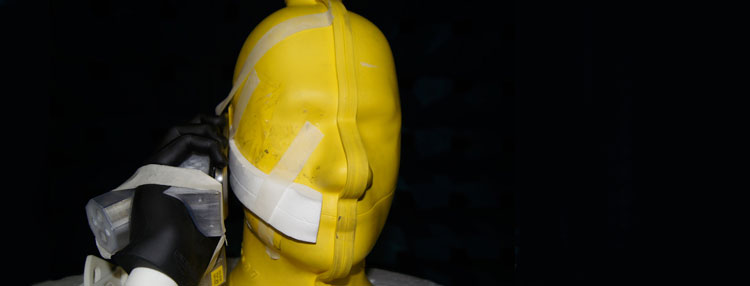Nokia's Antenna Testing Labs
Choosing a new phone we rarely pay attention to the quality of reception, showing greater interest in the screen size, multimedia capabilities of the phone, the battery - simply because we are used to good reception of the signal and de facto expect that there will be no problems with it. But sometimes trouble with the antenna still happens - many of you probably remember about the "antennagate."

Source: npl.co.uk
To avoid such problems, each mobile phone manufacturer conducts thorough testing of antennas in manufactured devices. Of course, initially the antennas are designed together with other details of the phone, and the device is already in finished form in the lab for testing. And, thanks to the painstaking and complicated preliminary calculations in designing the antenna, which guarantee normal signal reception, the final testing may seem to be a formality; without its passage, the device will never enter the market.
')

From the “antennagate” story, everyone probably learned the lesson that the signal level depends on how we hold the phone in our hand. To test such situations in Nokia's laboratories, models of human hands are used, repeating various ways of holding the phone in hand by users. There are a lot of such hand models to provide testing of phones of various sizes and form factors. In addition to models of human hands, dummies of a human head are used to test the effectiveness of the antenna, completely repeating the structure of the skull and the conductivity of certain tissues.
The results of all these tests are averaged to derive the magnitude of the total radiation power and isotropic sensitivity - these figures reflect the criteria for normal (or abnormal) operation of the device. For a complete check of each manufactured device, our specialists spend more than 150 hours - all so that device buyers are satisfied with the signal quality of their new phone. By the way, among all Nokia tested phones, the new models, starting with the Nokia N9 and ending with the Nokia Lumia 900 , show the best results.

Source: npl.co.uk
To avoid such problems, each mobile phone manufacturer conducts thorough testing of antennas in manufactured devices. Of course, initially the antennas are designed together with other details of the phone, and the device is already in finished form in the lab for testing. And, thanks to the painstaking and complicated preliminary calculations in designing the antenna, which guarantee normal signal reception, the final testing may seem to be a formality; without its passage, the device will never enter the market.
')
Problem occurrence
For understanding, the first mobile phones had no problems with the quality of signal reception, because they used external antennas. In 1999, we launched the Nokia 3210, the first phone with a built-in antenna, and from that moment the story began with a thorough testing of antennas. Much time has passed since then, and in all the phones the antennas were hidden inside the case. Moreover, other radio-receiving modules have appeared in mobile devices - GPS, Bluetooth, Wi-Fi, NFC - all of them are located very compactly, and their work depends more than ever on many factors, including the position of the phone in hand.Anechoic chambers
To test the antenna, so-called anechoic chambers are used - expensive rooms with walls with rubber spikes (the cost of a square meter is more than 120 thousand rubles). In such cameras there is no echo and any interference or random signals are excluded. It is impossible to create a universal anechoic chamber suitable for all tests, therefore there are several types of them, ranging in size from huge hangars to standard rooms. All these cameras use unique high-tech equipment to simulate cell towers, WiFi networks and Bluetooth devices. To simulate the reception of all these signals in different positions, devices in anechoic chambers are tested on both static and rotating platforms.
From the “antennagate” story, everyone probably learned the lesson that the signal level depends on how we hold the phone in our hand. To test such situations in Nokia's laboratories, models of human hands are used, repeating various ways of holding the phone in hand by users. There are a lot of such hand models to provide testing of phones of various sizes and form factors. In addition to models of human hands, dummies of a human head are used to test the effectiveness of the antenna, completely repeating the structure of the skull and the conductivity of certain tissues.
The results of all these tests are averaged to derive the magnitude of the total radiation power and isotropic sensitivity - these figures reflect the criteria for normal (or abnormal) operation of the device. For a complete check of each manufactured device, our specialists spend more than 150 hours - all so that device buyers are satisfied with the signal quality of their new phone. By the way, among all Nokia tested phones, the new models, starting with the Nokia N9 and ending with the Nokia Lumia 900 , show the best results.
Source: https://habr.com/ru/post/149656/
All Articles